The Effective Communication with Patients and Families Training equips healthcare providers with essential skills to enhance patient care through clear, compassionate, and age-appropriate communication. Participants will learn active listening techniques to ensure patients and families feel heard, strategies for expressing empathy, and the value of involving family members in care. The course also teaches how to adapt communication based on a patient’s age and how to use verbal communication effectively. By mastering these skills, healthcare providers can strengthen trust, improve patient outcomes, and foster a more supportive care environment.
What You Will Learn:
- Active listening techniques to ensure that patients and families feel heard
- How to adapt communication based on a patient’s age
- Strategies for expressing empathy and compassion
- How to effectively use verbal communication
- The importance of involving family members in the patient care process
Details:
Course length: 45 minutes; CME: 0.75
Languages: American English
Key features: Audio narration, learning activity, and post-assessment.
American Medical Compliance is accredited by the Accreditation Council for Continuing Medical Education (ACCME) to provide continuing medical education to physicians. Our Continuing Medical Education (CME) program is committed to enhancing the knowledge, skills, and professional performance of healthcare providers to improve patient care outcomes. Through high-quality educational activities, we aim to address the identified educational gaps and to support the continuous professional development of our medical community. American Medical Compliance designates this activity for a maximum of 0.75 AMA PRA Category 1 Credits. Physicians should only claim this credit for their complete participation in this activity.
Get Certified
American Medical Compliance (AMC) is a leader in the industry for compliance, Billing, and HR solutions. To become certified, please visit us at: American Medical Compliance (AMC).
Reach out for other courses by visiting the AMC Course Library.
Verbal Communication Skills
Useful communication is:
- Supportive
- Interested
- Loving
- Enthustiastic
Useless communication is:
- Impatient
- Disrespectful
- Bored
- Negative
In this training, healthcare providers will learn how to communicate in ways that build trust and promote healing. The course highlights the importance of avoiding useless communication as these behaviors can damage relationships and hinder patient care. By understanding the difference between useful and useless communication, healthcare providers can foster stronger connections with patients and families, ultimately leading to better care experiences and improved health outcomes.
Understanding Cultural Differences
One of the first challenges for culturally competent practice is acknowledgement that medicine is its own culture. This is often at odds with the cultural orientation of patients we serve. Western medicine puts a high priority on concepts like individualism. Also, it endorses that diseases have specific causes, that there be one system of care to address the disease, and that patients adapt to the system. Specific to pediatrics, we may have particular assumptions about family dynamics and how families mobilize on behalf of their children to make healthcare decisions.
In contrast to the culture of Western medicine:
- Patients’ cultural norms demonstrate more community than individual orientation.
- Conceptualize things as being beyond their control.
- See disease as a result of misfortune or imbalance, and
- May use other treatments in combination with or to the exclusion of Western medicine.
To bridge this gap, the onus is on the clinician to ask questions that uncover these orientations to health and illness. In doing so, they can be integrated into the caretaking of the patient and family when it comes to making healthcare decisions.
By taking this course, healthcare providers learn to recognize that medicine is its own culture, often different from the beliefs of the patients they serve. Western medicine values individualism, clear causes of disease, and system-based care. In contrast, many patients value community, see illness as misfortune or imbalance, and may use other treatments. Providers learn to ask questions that uncover these beliefs and include them in care planning. This helps build trust, improve communication, and support better health decisions, especially in pediatric care where family dynamics play a key role.
Communication During Transitions of Care
Inaccurate or untimely communication and ineffective teamwork in healthcare are consistently reported as leading causes of preventable adverse events, including medication errors and misdiagnosis. It is widely recognized that communication, which can be defined as “the verbal and nonverbal processes by which information is clearly and accurately exchanged among team members,” is an essential tool for reliable, safe, efficient, and patient-centered care.
In healthcare, communication includes information exchanged among healthcare professionals, across healthcare organizations, and with patients, families, and caregivers. Effective communication is critical to patient safety and has been shown to improve health outcomes and increase patient trust and engagement.
While effective communication is essential at all points of care, the nuanced nature of care transitions associated with the intricate network of individuals, healthcare professionals, and systems involved poses unique challenges as well as opportunities to improve patient safety. The Centers for Medicare and Medicaid Services defines transitions of care as “the movement of a patient between different healthcare settings,” such as from ambulance to emergency department, from intensive care unit (ICU) to medical ward, or from hospital to home.
These transitions increase risk of adverse events or missed patient care by opening up opportunities for miscommunication or lapses in communication between responsible parties. However, with increased risk of adverse events comes an opportunity to recognize, recover from, and learn how to minimize these risks.
In this course, healthcare providers learn how clear communication and teamwork help prevent errors like misdiagnosis and medication mistakes. They explore how verbal and nonverbal communication supports safe, efficient, and patient-centered care. The course focuses on care transitions—such as hospital to home—where communication often breaks down. Providers learn to spot risks, prevent miscommunication, and protect patient safety. These skills improve outcomes and build patient trust.
HIPAA and Patient Privacy
The HIPAA Privacy Rule permits health care providers to communicate with patients regarding their health care.
Covered hospitals and other covered health care providers can use a facility directory to inform visitors or callers about a patient’s location in the facility and general condition.
The HIPAA Privacy Rule, at 45 CFR 164.510(b), permits covered entities to notify, or assist in the notification of, family members, personal representatives, or other persons responsible for the care of the:
- Patient
- Of the patient’s location
- General condition or
- Death
In this course, healthcare providers learn how the HIPAA Privacy Rule allows them to communicate with patients about their care while protecting privacy. They explore when and how they can share a patient’s location, general condition, or death with family members or others involved in the patient’s care. The course also covers proper use of facility directories to provide limited information to visitors or callers. Understanding these guidelines helps providers share important updates responsibly, stay compliant, and support patients and families during care.



